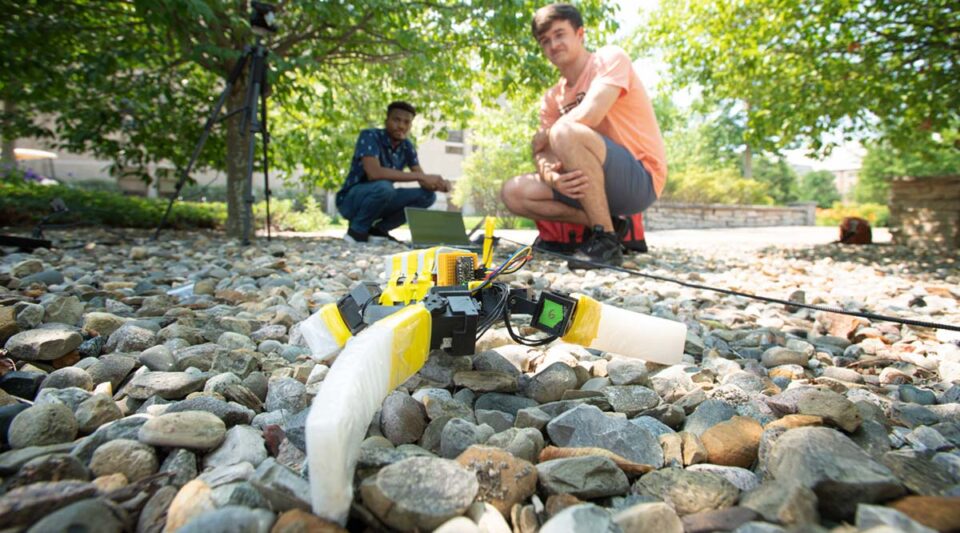Sea turtles glide majestically through ocean waters and maneuver like armored vehicles over rocks and sand on land. Their locomotive adaptability makes them particularly interesting to robotics experts, who seek to learn the secrets of their gait and propulsion.
“The sea turtle’s unique body shape, structure of their flippers, and varied gait makes them very adaptable,” said Yasemin Ozkan-Aydin, a roboticist and assistant professor of electrical engineering at the University of Notre Dame.
“Mimicking this adaptability is challenging because it requires an intricate understanding of how morphology, flexibility and gait interact with the environment. Studying how sea turtles adapt to traverse varied terrains can help us design more versatile robots.”



Aydin, along with Nnamdi Chikere, a Notre Dame electrical engineering doctoral student, and John Simon McElroy, an undergraduate from University College Dublin and a Naughton fellow at Notre Dame, have designed and built a robotic sea turtle, which they are testing in varied environments on Notre Dame’s campus. Their robot mimics a real sea turtle’s propulsion: its front flippers move it forward while its smaller, hind flippers allow it to change direction.
For potential conservation impact, Aydin modeled the robot on the size and structure of sea turtle hatchlings. Sea turtle babies are particularly vulnerable — only one in a thousand survive to adulthood. Hatchings must run a gauntlet of predator sea birds on their journey from nest to ocean, and that journey has become more perilous by a disorienting landscape of beach development and debris.
“Our hope is that these baby sea turtle robots may be used to safely guide sea turtle hatchlings to the ocean and minimize the risks they face during this critical period,” said Aydin.
— Karla Cruise, College of Engineering; photos and video by Wes Evard
